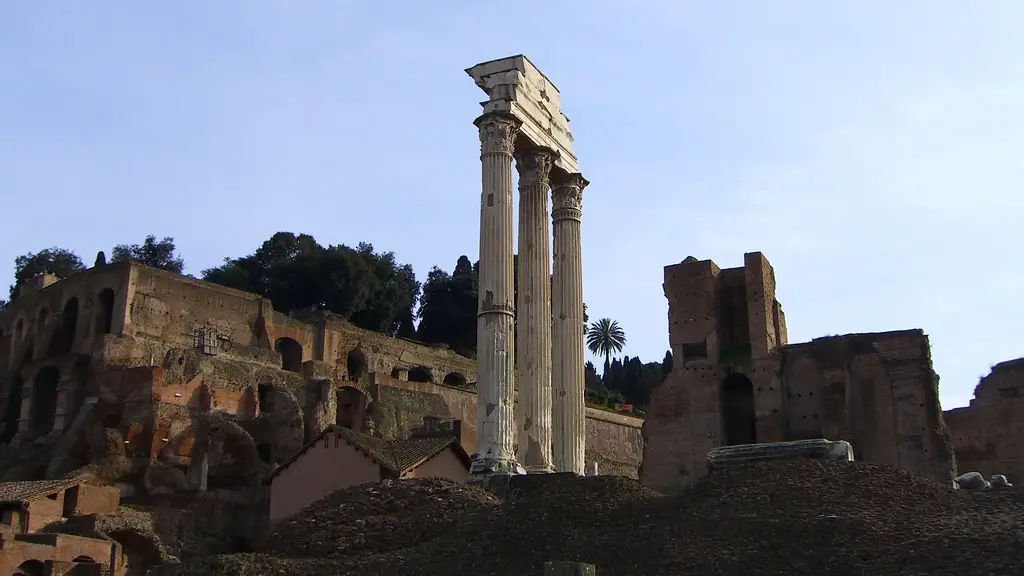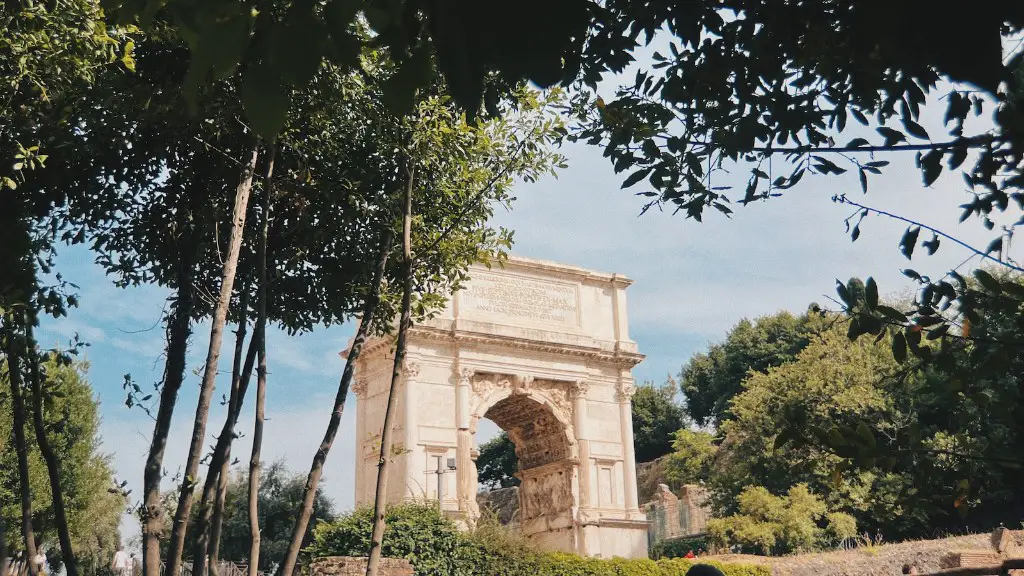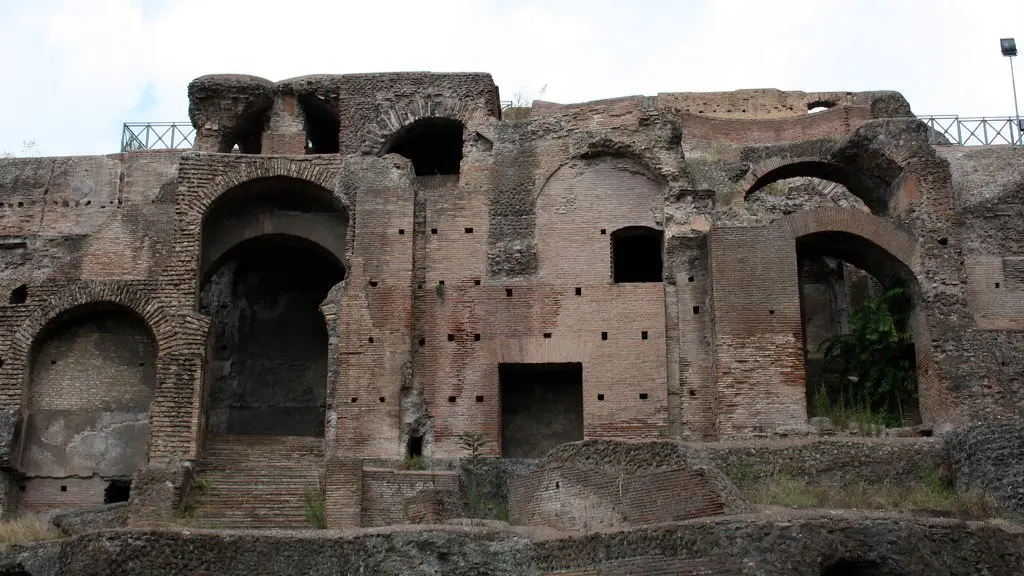Agriculture was essential for the Roman Empire to survive and thrive. Ancient Roman farmers faced many challenges in producing sufficient crops to feed the Empire’s population. As the Empire expanded, so did its need for food and agricultural products. Ancient Roman farmers had to be inventive in order to meet such a large demand.
Ancient Roman farmers relied heavily on growing wheat, which was their staple crop. Wheat was not only a source of nourishment but it was used to make the fermented drink, known as posca. Additionally, farmers cultivated barley and oats which were used to make beer and porridge. These crops were grown in the fields and often supplemented with legumes like vetch, peas, and beans.
Grapes were another important crop in Ancient Rome. Rome’s climate was favorable for growing the Vitis vinifera grape, the most widely cultivated species for winemaking. Wine was often used as part of religious ceremonies and was also used medicinally. Wine was usually made sweet by adding honey to the fermented grapes. The Romans were also skilled in cultivating olives, other fruits and vegetables, and herbs and spices.
Horticulture was another important aspect of ancient Roman agriculture. The Romans were sophisticated farmers and were experts in animal husbandry. Cattle was their primary source of livestock, used primarily for dairy production, with cows being the commonest domesticated animal. Sheep and goats were also raised and used for meat, cheese, and wool production.
Ancient Roman methods of irrigation allowed for efficient farming in the arid regions. The farmers employed different techniques for irrigation, for example, aqueducts, terracing, and rainwater collection. This allowed them to effectively maximize the productivity of their land.
Herding
Herding was another essential aspect of ancient Roman agriculture. Carcasses of animals, such as chickens and pigs, would be cooked and preserved for later use. Additionally, pigs, sheep, and goats were herded on the grasslands, from which milk and cheese products were obtained.
Herding allowed the Romans to maintain large herds of cattle and other animals, and also gave them access to manure, which was used as fertilizer. This fertilizer was immensely beneficial in maintaining and increasing crop yields, as well as helping to develop grasslands and pastures.
The Romans were also skilled at animal husbandry, and cattle, sheep, and goats were bred to meet their needs and increase production of milk and meat products. Farm animals were often used in ceremonies, such as entering the Circus Maximus or the Colosseum.
Agricultural Technology
Agricultural technology also plays a role in ancient Roman agriculture. Rome developed a plow and an animal-driven rotational system for planting and cultivating fields. Rome also invented agricultural implements and machines, such as moving carts, harrows, and pestles for grinding hand shepherds.
The use of wind and water-powered mills allowed the production of flours, and the use of water wheels made it possible to increase the efficiency of irrigation systems. Additionally, the Romans developed other sophisticated methods of agricultural production, such as soil conditioning and crop rotation.
The Romans also developed efficient irrigation systems. Aqueducts were an essential aspect of Roman agriculture and allowed for the efficient transport of water from sources such as rivers and streams to where it was needed. Additionally, wells, shallow ponds, and underground channels were also employed to provide water for fields and pasture.
Organic Farming
Organic farming was also practiced by the Romans. Although chemical fertilizers and pesticides were not yet available, the Roman farmers employed organic methods to maintain soil fertility and combat pests and diseases. Composting, crop rotation, and biological control of pests were the main techniques employed in organic farming by the Romans.
Organic farming was a sustainable practice that allowed the Romans to produce food and feed that was safe and nutritious. Ancient Roman farmers listened to the advice of their elders and experts, who had a deep understanding of nature, to understand the best practices for farming.
Agricultural Exports
Ancient Rome was also a major agricultural exporter; both within the Roman Empire and around the Mediterranean. The Romans produced a variety of foods and grains to export, such as wheat, olives, vegetables, and animals. Additionally, the Romans sent luxury goods such as olive oil, wine, and spices, to the rest of the Mediterranean region.
Roman farmers were able to produce high quality crops on a large scale. This allowed them to meet the needs of their own population, as well as those in distant lands. Additionally, the profits from exports played an important role in the Roman economy, as the revenues from agriculture helped strengthen the Roman Empire.
Organization of Agricultural Labour
Organization of agricultural labour was also important for ancient Roman agriculture. The Romans employed both slave labour and free workers to manage their farms and plantations. Free workers were usually employed in higher-level management roles or as tenant farmers, while slaves were used to perform the manual labour on the farms.
Slave labour was mainly used in fields that were difficult to access or in areas of mining. Slaves were also used to build infrastructure such as aqueducts and irrigation systems. Additionally, certain forms of slave labour were also used in the production of food and beverages; especially in wine making and pressing of olives.
Organization of Farming Communities
Ancient Roman farmers also organized themselves into farming communities. Villas, which served as the main unit of real estate in Roman times, were organized on a small scale, with residents concentrating in small areas close to their fields. Cultivators could come together to form cooperative associations, which allowed them to share resources and labor to maximize profits and protect themselves from the elements.
Additionally, farmers often worked as tenants on larger farms, known as latifundia, which supported the wealthy and powerful Roman families. On these farms, tenants were provided with land, livestock, and tools to manage the farm, in exchange for rent and supplies. The tenants, in turn, provided the landowners with a steady supply of food and other agricultural products.
Legislation
Finally, Roman law was important in regulating the production and trade of agricultural products. Roman laws and decrees established fair market prices and wages for farm workers, and regulated transactions with foreign countries. Additionally, Roman laws protected tenants by requiring landlords to provide them with sustenance and allowing tenants to inherit their fields.
The Romans also implemented laws on taxation, which were used to fund war efforts in the provinces. These laws provided necessary revenues for Roman armies to expand the Roman Empire. Additionally, the Roman government regulated deaths and births in the provinces, so that adequate food supplies could be guaranteed and maintained.
Conclusion
Ancient Roman agriculture was essential for sustaining Roman life and culture and it was essential for Rome to spread its influence. Ancient Roman farmers developed sophisticated methods for cultivating and herding in order to meet the demands of the Roman Empire. Agricultural exports also played an important role in the Roman economy and helped to strengthen the Empire. Additionally, Roman legislation helped to regulate markets and protect tenants, while promoting the welfare of Roman subjects.





